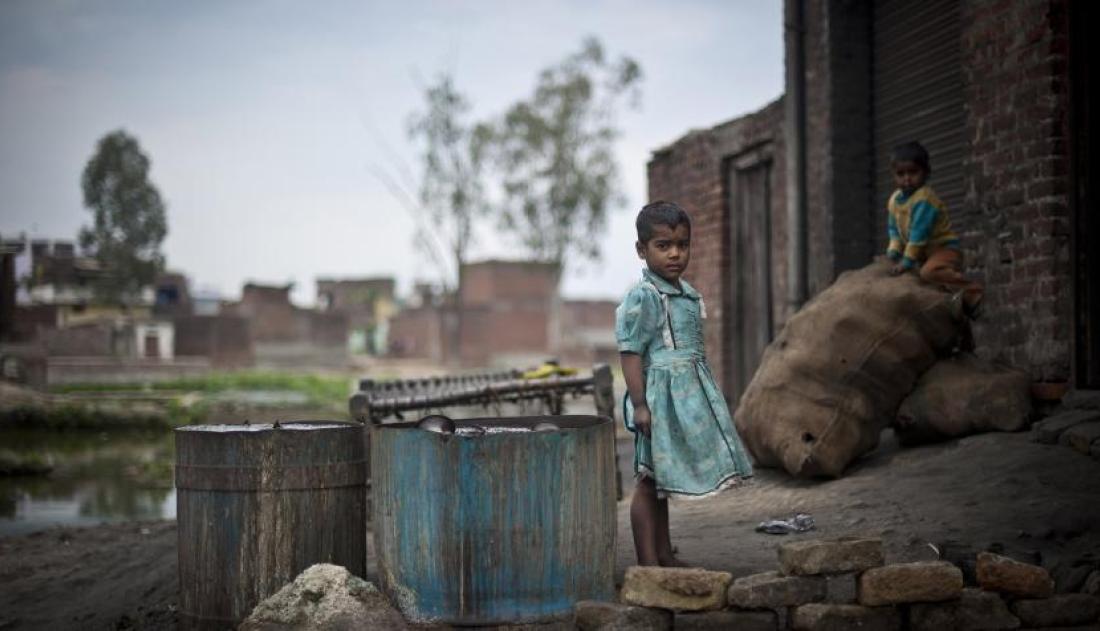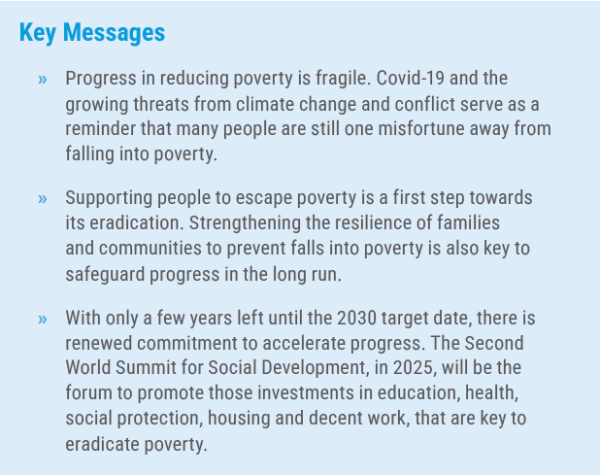
 In the three decades that preceded the Covid-19 pandemic, more than one billion people escaped extreme income poverty. As the health and economic upheavals brought on by Covid-19 and subsequent crises have made evident, however, progress towards poverty eradication is fragile.
In the three decades that preceded the Covid-19 pandemic, more than one billion people escaped extreme income poverty. As the health and economic upheavals brought on by Covid-19 and subsequent crises have made evident, however, progress towards poverty eradication is fragile.
With only a few years remaining before the target date of 2030 for achieving the Sustainable Development Goals (SDGs), there is a renewed commitment to accelerate progress towards poverty eradication. In 2025, the United Nations will convene the Second World Summit for Social Development to give momentum towards the implementation of the 2030 Agenda, with a focus on poverty eradication and the other two pillars of social development. The Summit should strengthen the international community’s resolve to end poverty everywhere between now and 2030.
Helping people escape extreme poverty is the first step towards achieving SDG 1. However, growing evidence on the poverty trajectories of families shows that escapes from poverty are seldom a straightforward path. Many people lift themselves out of poverty but fall back into it when a shock hits. A sharper policy focus on preventing impoverishment is needed to sustain progress and avoid setbacks.
MOVING IN AND OUT OF POVERTY – COMPLEX DYNAMICS
Poverty is a widespread risk. Many more households are affected by poverty than those observed to be living in poverty at specific points in time. In recent decades, the growing availability of longitudinal data – from surveys that follow the same people over time – has shown that household income and consumption fluctuate significantly. Some people who move out of poverty escape it permanently, while others do so only temporarily. Some people are born into poverty and remain trapped there for long periods and even across generations, while others avoid the experience of poverty altogether. Even though the number of people living in poverty may be stable or decline slowly, the composition of this population is in constant flux. As a result, progress in reducing poverty is much more volatile than suggested by the conventional picture of gradual reductions overall.
Although the necessary data are still lacking in many low and middle-income countries, researchers have been able to quantify flows into and out of poverty for some populations. For low- and middle-income countries with available data, or for areas within such countries, figure 1 categorizes people who experienced extreme poverty according to whether they made sustained or transitory escapes from poverty, became poor or were chronically poor during the time periods shown.
Sustained escapes were the most common trajectory in rural areas of Bangladesh (2011-2019) and Cambodia (2008-2017) and in Nepal (1995/96-2010/11). Bangladesh and Cambodia experienced consistent economic growth with employment creation and significant wage growth during the observation periods, with a move away from jobs in agriculture towards employment in greater value-added activities, including in rural areas. In contrast, Nepal’s sustained escapes from poverty took place amidst low rates of employment and economic growth. The country’s brisk poverty reduction is explained mainly by the end of internal armed conflict in 2006 and by the high and stable flow of remittances.
 Welcome to the United Nations
Welcome to the United Nations


